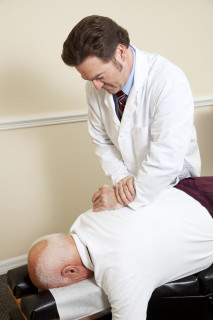Details of the trial
Summary
33 men and 22 women diagnosed with shoulder impingement syndrome were chosen. They were were randomly assigned either exercise alone or exercise and manual therapy. Each group received six sessions over three weeks.
Exercises
Exercises were conducted under the supervision of a physical therapist and were described as a "standardised strength and flexibility program". There were two passive stretches, plus six strengthening exercises described in the literature as being essential “core exercises” for shoulders.
Manual therapy
In trial of medication and simple therapies the intervention is easy to describe and quantify. However, for this trial experienced physiotherapists were basically told to assess the articular function and associated soft tissue issues of not only the glenohumeral (shoulder) joint but other related joints such as those of the cervical and thoracic spine. They were instructed to use their skills in manipulation and soft tissue therapies to correct what they found. This approach is not easy to quantify, but exactly what would happen if one consulted a quality clinician.
What was measured
Levels of pain were measured using visual analogue scales, which are usually having someone mark their level of pain on a scale of 1-10. Functional assessment was done using questionnaires covering a variety of general and specific activities.
The results
The results as measured by pain and function were clearly much superior for the group that received the manual therapy in addition to the exercises. It is best described by the following conclusion given by the authors.
"Manual therapy combined with supervised shoulder exercise is superior to supervised shoulder exercise alone for enhancing strength and function and reducing pain in patients with shoulder impingement syndrome. Our study also provides evidence that effective outcomes are obtainable after a relatively few physical therapy visits. It is important to recognise the functional interdependence of joints and soft tissues in the upper quarter when treating dysfunction of the shoulder."



